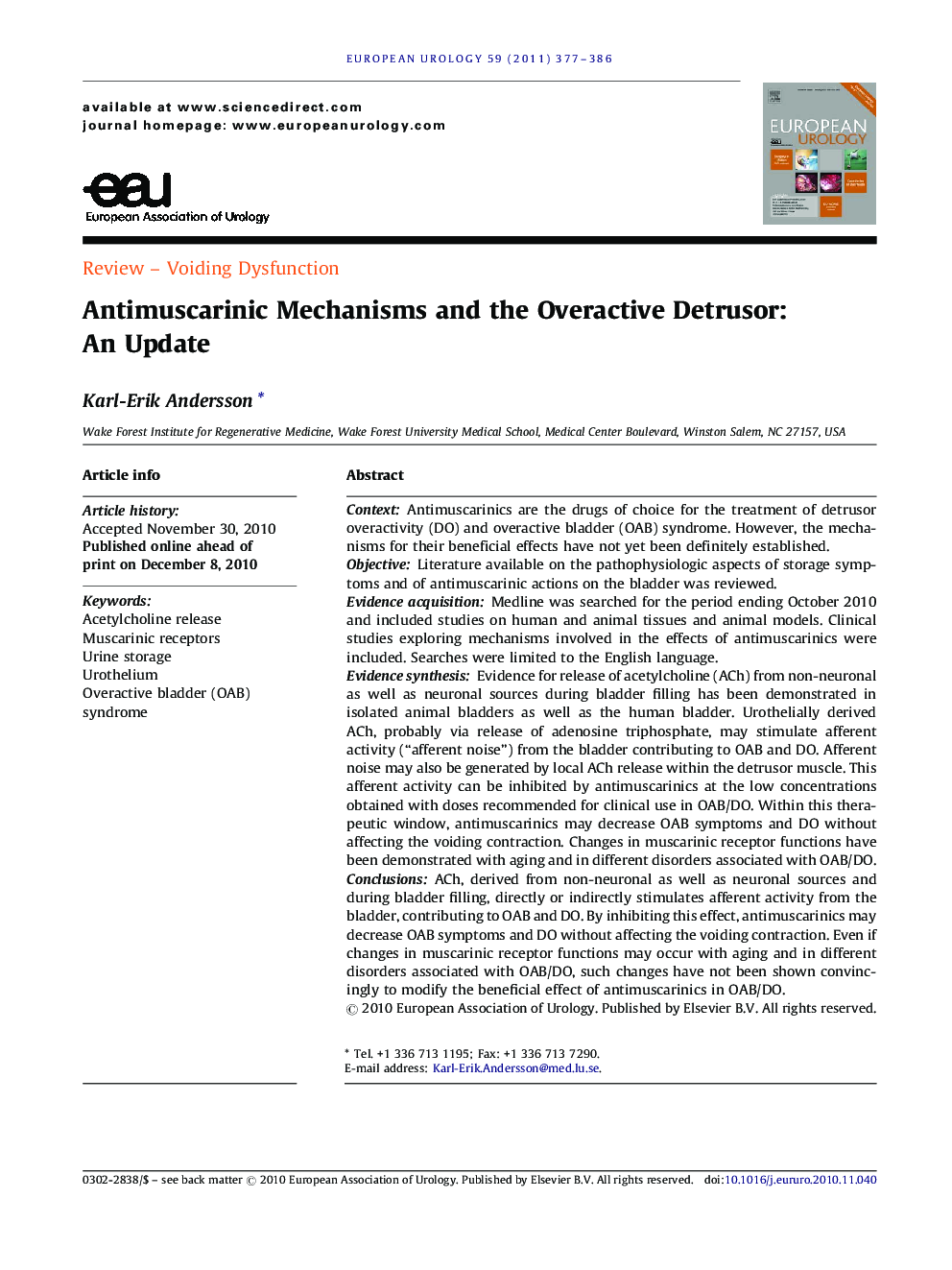| کد مقاله | کد نشریه | سال انتشار | مقاله انگلیسی | نسخه تمام متن |
|---|---|---|---|---|
| 6175622 | 1253002 | 2011 | 10 صفحه PDF | دانلود رایگان |

ContextAntimuscarinics are the drugs of choice for the treatment of detrusor overactivity (DO) and overactive bladder (OAB) syndrome. However, the mechanisms for their beneficial effects have not yet been definitely established.ObjectiveLiterature available on the pathophysiologic aspects of storage symptoms and of antimuscarinic actions on the bladder was reviewed.Evidence acquisitionMedline was searched for the period ending October 2010 and included studies on human and animal tissues and animal models. Clinical studies exploring mechanisms involved in the effects of antimuscarinics were included. Searches were limited to the English language.Evidence synthesisEvidence for release of acetylcholine (ACh) from non-neuronal as well as neuronal sources during bladder filling has been demonstrated in isolated animal bladders as well as the human bladder. Urothelially derived ACh, probably via release of adenosine triphosphate, may stimulate afferent activity (“afferent noise”) from the bladder contributing to OAB and DO. Afferent noise may also be generated by local ACh release within the detrusor muscle. This afferent activity can be inhibited by antimuscarinics at the low concentrations obtained with doses recommended for clinical use in OAB/DO. Within this therapeutic window, antimuscarinics may decrease OAB symptoms and DO without affecting the voiding contraction. Changes in muscarinic receptor functions have been demonstrated with aging and in different disorders associated with OAB/DO.ConclusionsACh, derived from non-neuronal as well as neuronal sources and during bladder filling, directly or indirectly stimulates afferent activity from the bladder, contributing to OAB and DO. By inhibiting this effect, antimuscarinics may decrease OAB symptoms and DO without affecting the voiding contraction. Even if changes in muscarinic receptor functions may occur with aging and in different disorders associated with OAB/DO, such changes have not been shown convincingly to modify the beneficial effect of antimuscarinics in OAB/DO.
Journal: European Urology - Volume 59, Issue 3, March 2011, Pages 377-386